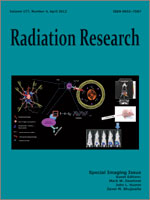Positron emission tomography (PET) is a noninvasive imaging technique that provides functional or metabolic assessment of normal tissue or disease conditions and is playing an increasing role in cancer radiotherapy planning. 18F-Fluorodeoxyglucose PET imaging (FDG-PET) is widely used in the clinic for tumor imaging due to increased glucose metabolism in most types of tumors; its role in radiotherapy management of various cancers is reviewed. In addition, other metabolic PET imaging agents at various stages of preclinical and clinical development are reviewed. These agents include radiolabeled amino acids such as methionine for detecting increased protein synthesis, radiolabeled choline for detecting increased membrane lipid synthesis, and radiolabeled acetate for detecting increased cytoplasmic lipid synthesis. The amino acid analogs choline and acetate are often more specific to tumor cells than FDG, so they may play an important role in differentiating cancers from benign conditions and in the diagnosis of cancers with either low FDG uptake or high background FDG uptake. PET imaging with FDG and other metabolic PET imaging agents is playing an increasing role in complementary radiotherapy planning.
How to translate text using browser tools
17 February 2012
Application of Metabolic PET Imaging in Radiation Oncology
Aizhi Zhu,
David M. Marcus,
Hui-Kuo G. Shu,
Hyunsuk Shim
ACCESS THE FULL ARTICLE

Radiation Research
Vol. 177 • No. 4
April 2012
Vol. 177 • No. 4
April 2012




